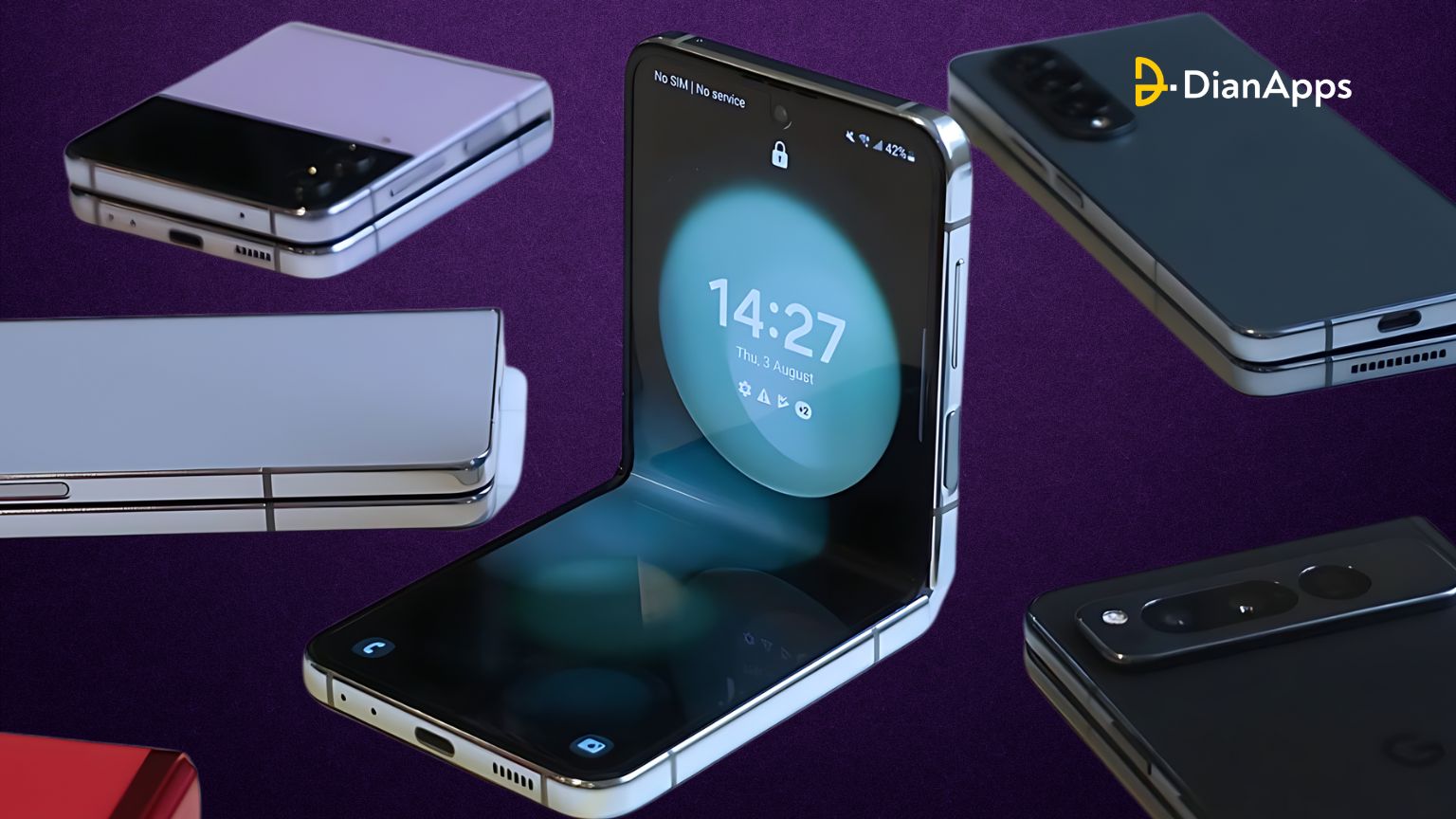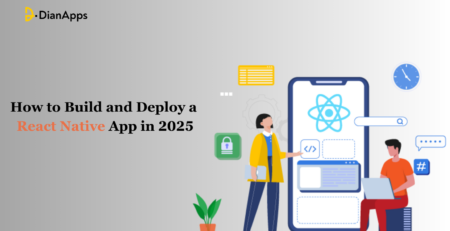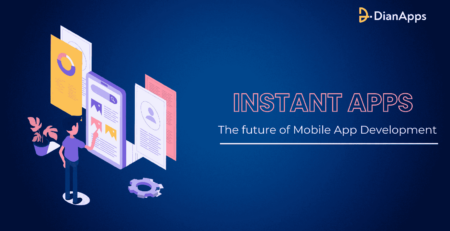The Future of App Development: Embracing Foldable Device Capabilities and Flexibility
Is it worth optimizing your mobile apps for foldable devices?
Yes, absolutely!
If you don’t invest in foldable app development, you are behind in the race.
You ask, why?
Well, experts initially predicted that foldable phones would stay niche, capturing only five percent of the flagship market by 2023.
However, recent data reveals a different set of numbers.
According to Future Marketing Insights, the foldable phone market was valued around $10K million in 2023. It is also projected to grow at a CAGR of 17 percent within next five years. Adoption rates are also expected to rise aggressively.

This simply means that as the number of people using foldable devices will increase with the manufacturing rate. Hence, companies who are not yet optimizing their apps for these devices could lag behind competitors who do.
That’s not the end, but just the beginning! Let’s explore this further while starting with the basics.
Understanding the Fundamentals of Foldable Devices
Foldable phones are smartphones with screens that can roll up or fold. When unfolded, the screen gets bigger, providing more space and functionality.
There are many types of foldable phones on the market, each with different screen dimensions. All credits go to the advances in foldable technology, we have various aspect ratios to support different fold styles, whether square or rectangular.
What Do Foldable Devices Mean for Developers?
Foldable devices offer more screen space, giving users a larger area to work with. However, this also means more challenges for mobile app developers.
Why? Because apps need to adapt to the larger screen size to ensure better usability.
What Impact Do Foldable Devices Have on App Development?
The growing demand for foldable smartphones is changing how apps are developed. It’s not just about making the user experience flexible; the impact is much bigger.
Foldable phones give developers more space to create immersive experiences with multi-window functionality. Apps designed for a single screen need to adapt differently to both small and large screens on foldable devices.
This means developers must rethink their approach to app design, ensuring that apps work smoothly and look good, whether the device is folded or unfolded.
Let’s understand the impact of foldable devices with some of the example apps:
- Video streaming apps: Developers can use the larger screen to stream videos in a bigger format and add extra controls or features.
- Calendar apps: Users can view a whole month at once instead of just a week.
- Banking apps: Imagine accessing multiple account details on a multi-window screen.
- News or business apps: Developers can add features like reading emails or news while viewing a document.
- Content creators: Users can easily switch between multiple apps.
Benefit of Developing Apps for Foldable Devices
Let’s look at how foldable devices are changing and benefitting mobile app development:
1. Extra Screen Benefit
Foldable devices aim to give users a more immersive experience by providing a large screen. This technology combines two screens into one big screen, enhancing usability and engagement.
2. Enhanced User Experience
Software for foldable devices offers a much better user experience. Unlike single-screen devices, foldable phones let you run multiple apps smoothly at the same time. For example, photographers can benefit from using foldable phones to take better pictures with different camera angles, whether the device is open or closed. This enhances both usability and functionality.
3. Small Screen Size
Foldable device software can expand and contract based on user needs, offering both large-screen functionality and compact operation. This flexibility allows users to switch between expanded and normal states, enhancing the app’s versatility and usability on a single device.
4. New Content Format
Thanks to the larger screen on foldable devices, creators can now release new types of content that fully utilize the extra screen space.
5. Advanced Features
Traditional smartphones are limited by their smaller screens, making it hard to fit all the desired features. Foldable devices solve this by allowing multi-screen apps, giving users more features on a single device.
6. Entry to a New Market
Foldable phones offer extra internal space for powerful hardware like better CPUs and larger or dual batteries. This meets the power demands of larger screens. Apps for foldable devices help businesses reach a new market of users who want more functionality and multitasking capabilities from their phones.
Challenges of Building Apps for Foldables
Foldable devices are designed to provide a larger screen, giving users a more immersive experience. This bigger screen space allows developers to create more engaging apps.
However, developing apps for foldable devices is challenging. Unlike traditional apps, which are designed for standard screens, apps for foldable devices need to work smoothly as the screen size changes.
Since the display technology in foldable devices is different, the app design, UI, and UX must also be different. Currently, apps for foldable devices face these challenges:
1. Maintaining a Seamless Screen Experience
Developers need to ensure their apps work smoothly as foldable devices switch between folded and unfolded states. This means creating a seamless experience where the screen adapts and the resolution changes without issues.
The challenge is to avoid confusion during these transitions. Developers must write code that minimizes or eliminates design changes as the screen transitions. Additionally, since multi-window mode allows for multitasking, developers should carefully design their apps to handle these features well.
2. Supporting Multiple Active Apps
Like multitasking, developers also need to make sure their apps support the multi-resume feature. This allows apps to keep running smoothly between folded and unfolded screens without freezing other apps in the background. With the Android 10 update, developers can now create apps that support multiple functions.
Previously, foldable phones could only resume one app after changing the screen orientation. Now, with the multi-resume feature, users can have multiple apps open and active simultaneously. Developers should keep this functionality in mind to provide a seamless user experience across different screen sizes.
3. Handling Multiple Windows Efficiently
Foldable devices have two states namely, folded and unfolded.
When unfolded, a smartphone becomes a tablet, providing extra screen space for a more immersive experience. Developers can use this larger screen to include more features and actions in their apps. In the folded state, the device works like a traditional smartphone.
The app’s UI design needs to support both one-handed and two-handed operations. This means design teams must focus on key UI/UX aspects. They need to understand Android developer options to keep elements within the thumb’s reach when the device is folded, and within the finger’s reach when it is unfolded. This ensures a smooth switchover between the two folding states. Hire an Android app developer to keep all your updates and requirements in check.
4. Ensuring App Stability Across Folds
Foldable devices offer more screen resolution than traditional straight-screen devices. With the Android 10 update and later versions, these devices support a wide range of aspect ratios, from thin and long screens to a 1:1 ratio.
Because of this, apps for foldable devices must be tested on different resolution formats. Developers need to define the minAspectRatio and maxAspectRatio variables in their code to set the minimum and maximum resolution the app can handle. This ensures the app works well on various screen sizes and ratios.
5. More Testing
Foldable devices offer various use cases and scenarios. To ensure no bugs remain, thorough testing of every feature and usage scenario is necessary. This increases time and costs spent on quality assurance for multi-window apps.
Also read: How To Select Mobile App Testing Platforms
6. Higher Development Cost
Developing an app for foldable devices or adapting an existing one involves entering new territory. It requires designing, developing, and testing for various modes and use cases, which increases both time and costs for development.
Main Considerations for Developing Apps for Foldable Devices
We’ve explored the concept of foldable phones and their varied uses. Now, let’s focus on the essential points for developing mobile apps for multi-screen devices. Here are the key factors to consider when building a foldable version of your app.
App Design Considerations
1. One-or-Two-handed App Design
When a foldable phone is folded, it’s designed to be operated with one hand, just like regular smartphones. This ensures convenience for users.
In contrast, when the phone is unfolded into a larger screen, it generally requires both hands to use effectively. This shift in usability means that design teams must carefully consider UI/UX development services. They need to place important buttons and controls within reach of both thumbs and other fingers for comfortable and intuitive interaction. This ensures that users can operate the app easily whether the device is folded or unfolded.
2. Screen Continuity
Users often switch between the unfolded and folded states of their foldable phones. Developers need to ensure a smooth user experience without disrupting the app’s layout. Minimizing or eliminating design changes is crucial to maintaining a consistent and intuitive app flow.
3. Multi-window
This is a great opportunity for designers and developers to focus on the multi-window experience. They should create designs and features that support multitasking effectively.
App Development Considerations
1. Ensuring App Quality
Foldable smartphones attract tech-savvy users like business owners, writers, gamers, and tech enthusiasts. To convert these users into regular ones, you must focus on your app’s quality. Any flaws could lead to your app being uninstalled. Your app should run smoothly, adjust to different screen sizes, and support seamless multitasking.
2. App Continuity
App continuity on foldable phones means apps should smoothly switch between different screen states without interruption. To achieve this:
Ensure apps can dynamically adjust their size.
Set resizeableActivity=true in your app’s settings.
Missing this step could lead to the system resizing the app incorrectly, affecting its size, aspect ratio, and layout configuration.
3. Multi-Display Window
In the future, foldable devices may support multiple screens simultaneously, similar to how Chrome OS handles projected screens. Android 10 and higher support activities on secondary screens. This means users can seamlessly move activities from one screen to another on devices with multiple displays.
For multi-screen situations, multi-resume allows several activities to receive input simultaneously, enhancing usability during folding transitions. Activities need to check the current display during handling, especially in “onCreate” and “onConfigurationChanged” events.
Ensure your app handles:
- Using secondary screens effectively.
- Dealing with display cut-outs for a smooth user experience.
4. Test Thoroughly
Apps for foldable devices need extensive testing to ensure they work well on both screen sizes. Identify and fix any bugs to emsure a smooth user experience. Both folded and unfolded versions of your app must have consistent UI and performance, and handle screen rotations perfectly.
5. Gather User Input
Because foldable technology is new, there may be errors and bugs that you miss during development. Collecting feedback from users is crucial for improving foldable app development. Users can provide valuable insights to help you identify and fix issues, ensuring your app is polished and user-friendly.
Cost of Developing a Mobile app for Foldable Devices
Building mobile apps for foldable devices can be costly due to the unique features and development requirements they demand. The cost varies based on your app’s complexity, features, and functionality. On average, expect to invest between $20K to $25K or more for developing an app for foldable devices.

It’s best to consult with a Mobile app development company to get a precise cost estimate according to your specific needs.
Future Of Foldable Devices And Mobile App Development
Foldable smartphones have opened up new possibilities in how we use and interact with mobile devices. These phones offer features that go beyond traditional smartphones by introducing new ways to experience apps and functions. While there are currently only a few designs with different foldable screens, the future holds the guarantee of even more innovative and exceptional designs.
We might soon see foldable devices with new aspect ratios, creative folding techniques, and even rollable designs that fit around your wrist. Additionally, Android updates specifically customized for foldable devices could add even more functionality, making them more appealing to users.
Customers who want a larger screen in a compact package are increasingly interested in foldable smartphones, especially as they gain popularity in developing nations like India. However, two challenges remain: the weight and size of these devices. As more companies join the foldable market, the competition with traditional smartphones will be fascinating to watch.
How Can DianApps help in Building Apps for Foldable Devices?
At DianApps, we’ve been offering mobile app development services for years, adapting to the foldable smartphone market innovations. Our team of expert mobile app developers is enthusiastic about exploring new inventions in the industry.
We specialize in creating robust and bug-free apps for both conventional and foldable screens, catering to clients worldwide.
Our developers understand the complexities of app design and technical requirements specific to foldable devices. Whether it’s ensuring smooth transitions between folded and unfolded screens, supporting multiple window functionalities, or maintaining screen flow, we ensure your app delivers an outstanding user experience.
We’re just a click away for a detailed consultation to discuss how we can mould our expertise to meet your business needs.




